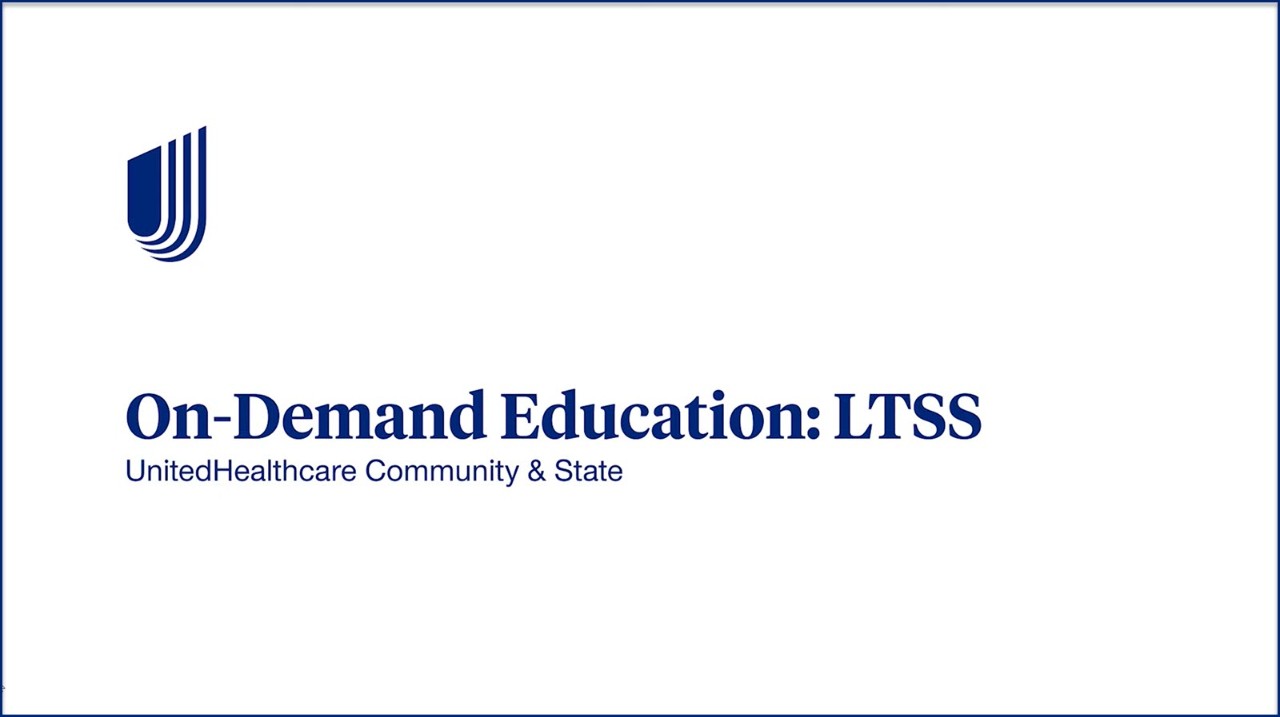Long-term services and supports (LTSS) refers to a broad range of medical, functional and social services that are needed by individuals who have complex health needs due to aging, chronic illness or disability. These services can be provided in a range of settings, including nursing homes, assisted living facilities, convalescent homes, and home and community-based settings.
Medicaid serves as the largest payer for LTSS.
Watch our on-demand education video to learn what LTSS are, how programs are funded, and the advantages of delivering these services through managed care.
Long-term services and supports overview
The need for LTSS is generally measured by limitations in one’s ability to perform activities of daily living (ADLs) and instrumental activities of daily living (IADLs), both of which allow individuals to live independently in their communities.
LTSS are delivered in a variety of settings, including home- and community-based settings (e.g., adult day services and personal care/homemaker services) and institutional care (e.g., intermediate care facilities for people with intellectual and developmental disabilities and nursing homes).
Independent living and self-direction
For many who utilize LTSS, living independently and the opportunity to self-direct needed services are central to their personal satisfaction. For these individuals, home- and community-based services (e.g., adult day services and personal care/homemaker services) are crucial.
Independent living and self-direction are often misunderstood, which can compromise a person’s experience. Our National Advisory Board recently published two whitepapers to provide visibility into the dynamics of independent living and self-direction and some of the challenges people experience when trying to achieve them.
To learn more about the work of our National Advisory Board visit our NAB page.
Care at home
LTSS programs are administered either in nursing facilities or through Home- and Community-Based Services (HCBS). HCBS support people as they continue to live in their home or a setting of their choosing. Individuals who receive HCBS still make appointments and go to a medical facility for care, but they also receive wraparound services in their community or directly in their home.
Approximately 14 million individuals need LTSS in the United States today. The vast majority of these individuals want to stay in their residence for as long as possible, making HCBS the more desirable choice for many individuals needing LTSS. HCBS also offer considerable cost savings for states, with nursing home care costs 73% greater than the cost of care in the community.
LTSS: Managed Care Vs. Fee-for-Service
What makes managed care LTSS (MLTSS) different from fee-for-service (FFS) models? With managed care, a case manager provides member-centric services that go beyond just health care. MLTSS offers centralized access to a broad range of services to achieve whole-person care. Ongoing care navigation and support reduces the need for acute emergent care and costly inpatient admissions and hospital stays. By shifting LTSS from FFS to managed care, states can also anticipate a more efficient use of home- and community-based services (HCBS).
MLTSS programs provide a cost-efficient and sustainable solution to help states meet the needs of individuals with complex care needs while affording them greater flexibility and control over their lives.
Improving health equity for LTSS beneficiaries
Working to eliminate health disparities is core to our business, culture and fundamental purpose at UnitedHealthcare. We will only be satisfied when every person, regardless of ability, disability, age, race, gender, place, or circumstance, has the opportunity to live their healthiest life.
Member stories
For so many of the individuals we serve, the ability to live at home or in a community-based setting of their choosing is important. Ensuring that our members are safe and that the necessary care can be provided is critical to making this a reality.
Here are some of their stories.


